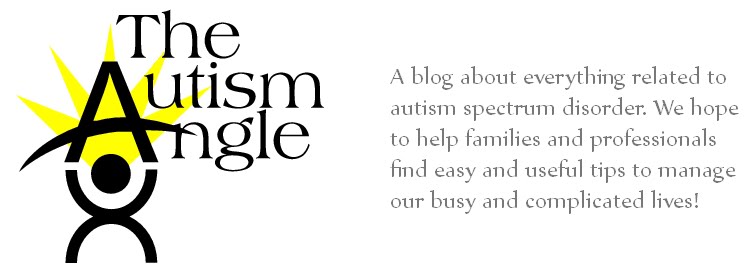Thursday, August 18, 2011
Before Pictures: Autism and the power of objects
Individuals with autism are often, unfortunately, given strategies that are attempted to be one size fits all. Trying to fit persons into techniques that are not at their level of understanding can be disasterous and overwhelming. There are many different areas of teaching and therapeutic strategies where this is done. One specific teaching misconception is that by making things visual for individuals we always use pictures, but this is not always the best idea. Pictures are not always as clear as we may intend them to be.
Visual information can be more understandable to those on and off the spectrum. Not all types of visuals are best suited and we must individualize as much as possible. We often immediately go to pictures and icons rather than first assessing where the information is most meaningful for that person. Objects can speak volumes to so many and it can be forgotten that this can be an important tool in giving information as well as teaching communication.
Communication Exchange:
Picture Exchange Communication System (PECS) developed in 1992 by Andrew Bondy made exchanges for communication more widely understood by parents and professionals. Boardmaker, by Mayer-Johnson, also changed the field to make pictures quick to make and use. It is rare that I walk into a special education classroom and don't see these icons. This is great that it has become more mainstreamed BUT not everyone with autism understands pictures and icons as a means to communicate.
Pictures and icons are more representational/abstract. It is difficult for many individuals to make the connection between a symbol and the item or activity that it is meant to represent. Objects are great to try with those that aren't quite showing that level of understanding in the area of pictures. Molly gave great examples on how to set-up communication with objects. Using the actual item helps to understand exactly what item is being requested.
When making a communication exchange, whether with pictures or objects, it is important to focus on the back and forth/give and take. Many individuals have trouble directing their language or requests to another person. Handing a picture or object (such as a bubble wand) to someone else and then receiving the item (container of bubbles) helps them to understand the power and purpose behind these requests.
Transitions:
Understanding what is going to happen is very important for us all. Not knowing expectations of a situation can many times cause difficulties for those with autism. Schedules or transition information can be so helpful to know expectations.
When using objects, keep it simple! Objects to represent a change in activity naturally occur on a daily basis. We hand a child their blanket and take them to bed, direct them to their shoes and take them outside or get their bookbag before going to school. Using these items in a more systematic way at school, in the community and at home, can be just like a schedule of knowing what is going to happen next.
Simple objects can be used for letting the individual know what will happen next.
In this picture:
Pull-up = changing your diaper
Ball = Play in the backyard
Toothpaste = Go to bathroom to brush teeth
Duck = Go to bathroom to take a bath
Doll = Go to bed
Cup = Time for lunch
Think about the objects in your environment and make it specific to that child.
Handing an object, such as this bath duckie, let's the child know that we are going for a bath. This is important to be specific since we can go to the bathroom to use the toilet, bathtime, brush teeth, etc.
Once the individual takes the item, such as the bath duck, to the location it then can be used functionly; as part of that activity.
These are meerly a few suggestions to get you started in understanding the information behind objects. Another wonderful blog, written by parents, shares lots of ideas specific to their child and home. Check out one of their many posts regarding their child and use of an object schedule
For additional ideas on how to structure without giving too much information to overwhelm your child check out the book More than Words by Fern Sussman
-Abby
Subscribe to:
Post Comments (Atom)






I was diagnosed as HEPATITIS B carrier in 2013 with fibrosis of the
ReplyDeleteliver already present. I started on antiviral medications which
reduced the viral load initially. After a couple of years the virus
became resistant. I started on HEPATITIS B Herbal treatment from
ULTIMATE LIFE CLINIC (www.ultimatelifeclinic.com) in March, 2020. Their
treatment totally reversed the virus. I did another blood test after
the 6 months long treatment and tested negative to the virus. Amazing
treatment! This treatment is a breakthrough for all HBV carriers.